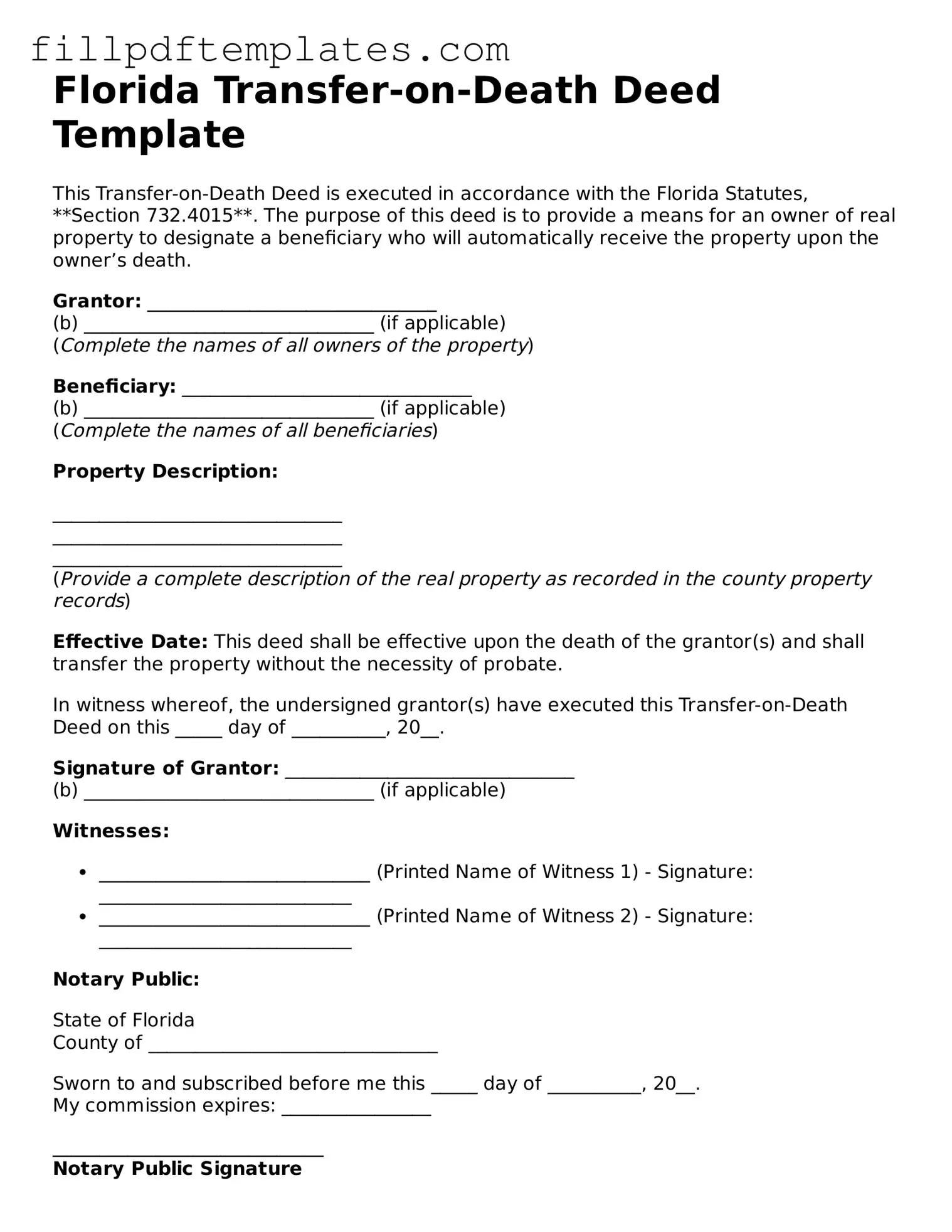Florida Transfer-on-Death Deed Template
This Transfer-on-Death Deed is executed in accordance with the Florida Statutes, **Section 732.4015**. The purpose of this deed is to provide a means for an owner of real property to designate a beneficiary who will automatically receive the property upon the owner’s death.
Grantor: _______________________________
(b) _______________________________ (if applicable)
(Complete the names of all owners of the property)
Beneficiary: _______________________________
(b) _______________________________ (if applicable)
(Complete the names of all beneficiaries)
Property Description:
_______________________________
_______________________________
_______________________________
(Provide a complete description of the real property as recorded in the county property records)
Effective Date: This deed shall be effective upon the death of the grantor(s) and shall transfer the property without the necessity of probate.
In witness whereof, the undersigned grantor(s) have executed this Transfer-on-Death Deed on this _____ day of __________, 20__.
Signature of Grantor: _______________________________
(b) _______________________________ (if applicable)
Witnesses:
- _____________________________ (Printed Name of Witness 1) - Signature: ___________________________
- _____________________________ (Printed Name of Witness 2) - Signature: ___________________________
Notary Public:
State of Florida
County of _______________________________
Sworn to and subscribed before me this _____ day of __________, 20__.
My commission expires: ________________
_____________________________
Notary Public Signature
